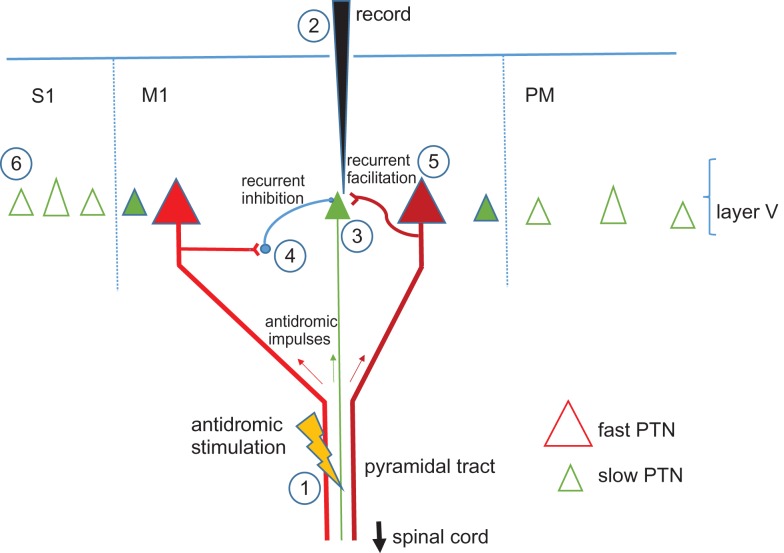Figure 1.
Six different factors that might explain the relative lack of slow pyramidal tract neurons (PTNs) in recordings from motor areas. 1: failure to excite slow axons, electrical stimulation of the pyramidal tract to set up antidromic volleys activates large, fast axons (in red) but may not activate slow, thin axons (green) originating from slow PTNs (green triangle). 2: recording bias towards larger neurons may result in most antidromic effects being recorded in large, fast PTNs (red triangles). 3: failure of antidromic impulses to invade the soma and dendrites of small PTNs. 4: recurrent inhibition (RI), antidromic impulses in axons of large fast PTNs (red) results in impulses in intracortical collaterals which activate local inhibitory interneurons (blue) terminating on slow PTNs (green). RI prevents antidromic impulses in slow fibers from invading the cell bodies and dendrites of slow PTNs (green) 5: recurrent facilitation through excitatory collateral from fast PTNs to slow PTNs causes synaptic discharge of slow PTNs, colliding antidromic impulses in slow fibers before they can reach their parent slow PTNs. 6: absence of PTNs with slow, thin axons in M1, possible that these fibers originate mostly from cortex outside area 4 (M1) such as postcentral gyrus (S1) or premotor areas (PM).

